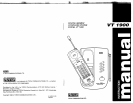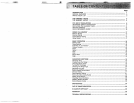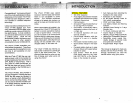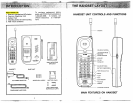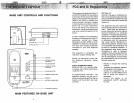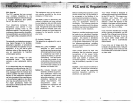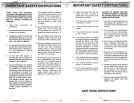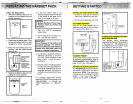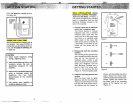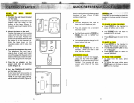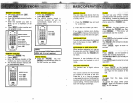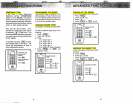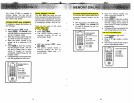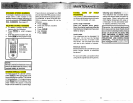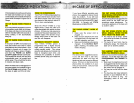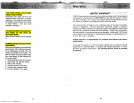
Fill in the telephone number card on
the base unit.
CARD
CHEAK FOR A DIAL TONE.
After the batteries are charged, pick up
the handset. Now press
PHONE
on
the handset, you should hear dial tone.
If not, see 'IN CASE OF DIFFICULTY'
on page
26.
CAUTION:
1.
Never install telephone wiring
during
a
lightning storm.
2.
Never install telephone jacks in wet
locations unless the jack is
specifically designed for wet
locations.
3.
Never touch uninsulated telephone
wires or terminals unless the
telephone line has been
disconnected at the network
interface.
4.
Use caution when installing or
modifying telephone lines.
WALL INSTALLATION USING
MOUNTING SCREWS PROVIDED
Tools You Will Need:
A
hammer, a
nail, a pencil or ballpoint pen, a Phillips
head
(+)
screwdriver, and the Wall
Mounting Template included in the
back of this booklet.
1.
Choose a spot near an electrical
outlet and a telephone jack.
Your phone requires a modular
telephone jack and a standard
electrical outlet
(120v
AC).
The
power cord is six feet long; make
sure there is an electrical outlet
within reach of the base. The
outlet should not be controlled by
a wall switch. If the switch is ever
turned off, the phone will not
operate.
2.
Choose and mark the mounting
position.
The mounting screws should screw
into a wooden stud within the
wall-
they will not hold securely in
wallboard alone. Locate a wall
stud in the area where you want to
install your telephone. Use the
Wall- Mounting Template and a
pencil to mark the screw posi-
tions on the wall over the stud
(Figure
1).
Put the template aside.
3.
Install the mounting sleeves and
screws.
Start the screw holes by lightly
tapping a nail into the marks you
made on the wall. Remove the nail
from the wall. Now slip the mount-
ing sleeves onto the screws as
Figure
1
Figure
2
shown, with the smaller end of the
sleeve toward the screw head.
Insert the screws into the holes you
started. Tighten the screws until
the larger end of the mounting
sleeve is flat against the wall
(Figure
2).



